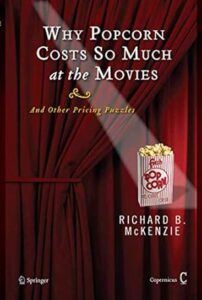Dungeons, Dragons, and Monopolies
Dungeons & Dragons (D&D) is a massively popular tabletop role playing game. While the game has been around since the 1970s, it has recently exploded in popularity with podcasts, TV shows, video games, and movies making the game more mainstream. Each year, the intellectual property alone generates millions in revenue for parent company Hasbro (for the sake of ease, I will be referring to the corporation as D&D, even though Wizards of the Coast is the publisher and Hasbro is the parent. Thus, I will sometimes attribute decisions to D&D even if they were made by Hasbro). Originally, D&D published physical rulebooks and sourcebooks to help guide players and establish the rules of the game. There were also modules players could buy: pre-made stories to ease new players into the system or challenge experienced players. Players often “homebrew” content as well: they create their own stories, magic items, and so on. Using a physical character sheet, players would track their character’s progress, abilities, inventory, spells, etc. Some character classes can get very complicated to track by hand, in particular spellcasters (wizards, warlocks, sorcerers, bards, and clerics). Players need to roll die, add numbers, calculate probabilities on the fly, and determine results of actions. I like to call D&D “Homework: The Game” because of how complicated it can get. To help players manage increasingly complex characters, the online game streaming company Twitch created a website called D&D Beyond which automated a lot of the process. Players could simply buy the D&D rulebooks on the website, set up their characters, and the website would track and roll everything for them. In 2022, D&D acquired D&D Beyond as part of a quest to bring all content under one roof (theirs) and capitalize on the move to digital gaming that had accelerated during the COVID-19 pandemic lockdowns. On paper, it looked like D&D was becoming a monopoly. By owning a popular IP, the firm could control large aspects of the tabletop gaming world. Most homebrew content creation under the company’s Open Game License allowed for players to use large swaths of D&D content for their own uses, and even limited commercial uses, without needing to pay royalties. This agreement had been around since 2000 and players treated it as a matter of course. However, in August 2022, D&D announced they would be moving toward a new content agreement with players called One D&D. Players initially feared the new One D&D would limit their freedom to create without paying royalties to D&D. While initially denied by the company, as more details emerged, player fears were confirmed. The fanbase revolted by canceling subscriptions to D&D Beyond and searching out (or developing) new tabletop games. By January 2023, D&D backed off, even putting much content under an irrevocable Creative Commons license. D&D tried to flex their monopoly muscles and failed. More recently, D&D tried to flex their monopoly muscles again. Following an announcement of a new edition of the rulebook, they announced on August 22, 2024 that anything tied to the previous rulebook would not function in D&D Beyond (or other digital content) unless players homebrewed the material or bought the new rulebook. In other words, D&D was attempting to take away content people had already bought and force them to buy new content. Again, the fanbase revolted. Not one week later, on August 26, D&D announced they “heard fan feedback loud and clear” and were canceling the planned change to D&D beyond. Players will be able to use content previously purchased on the digital platforms. There’s an important lesson here, one that the late mentor and friend Steve Horwitz used to repeat all the time: “monopoly” does not equal “big.” Companies may be big, and they may even own lots of IP and content, but they are not necessarily monopolies with the ability to set market prices. Any monopoly power they have will heavily depend on the availability of substitutes for their product. If there are many substitutes, the firm, regardless of their size, may act much like a competitive firm. Mistaking size for monopoly power is an error that runs in multiple directions. Firms often overestimate their monopoly power and, as the case with D&D, are forced to back down. Likewise, antitrust regulators often overestimate the monopoly power of firms and end up turning efficient markets inefficient. Metrics like firm size, market share, profit, or profit margin do not accurately describe the monopoly power of a firm. Sometimes, we may not know how little (or much) monopoly power the company has until they do something boneheaded like D&D. P.S. This is a picture of my D&D group. My character, Vargen, is second from the right. (0 COMMENTS)







